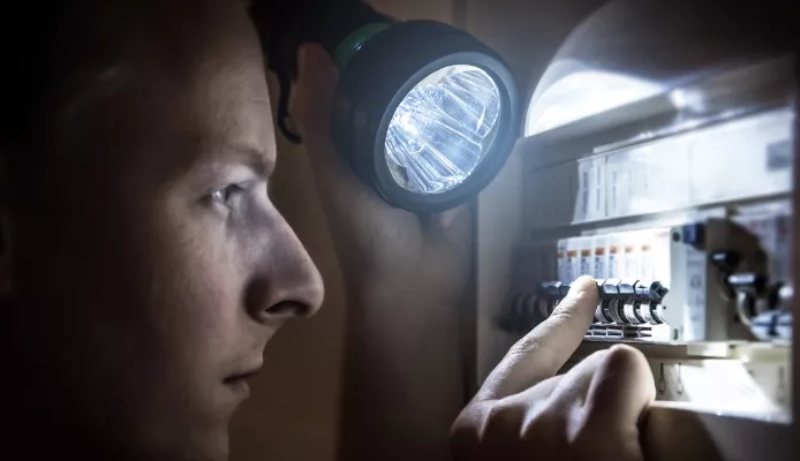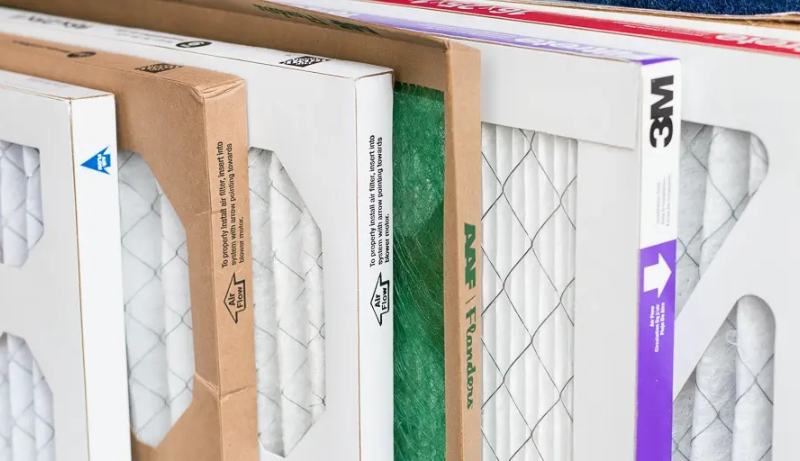Gas fireplaces are a popular choice for homeowners seeking the warmth and ambiance of a traditional fireplace without the hassle of dealing with logs, ash, or smoke. One of the key advantages of a gas fireplace is the convenience it offers, particularly when it comes to starting and controlling the fire. If you have a gas fireplace equipped with a wall switch, you’re in luck! Here are five easy ways to turn on your gas fireplace with the wall switch, making the experience both convenient and enjoyable.
1. Locate the Wall Switch
Before you can enjoy the cozy flames of your gas fireplace, you need to locate the wall switch. This switch is typically installed on the wall near the fireplace, usually within arm’s reach and at a convenient height. It may be labeled with markings like “On/Off” or “Ignition.” Once you’ve found the switch, ensure it is in the “Off” position before proceeding.
2. Verify the Gas Supply
Safety should always be your top priority when dealing with gas appliances. Before attempting to use your gas fireplace, confirm that the gas supply to the fireplace is turned on. If you are unsure about the gas supply or suspect a gas leak, it’s essential to contact a qualified technician to inspect and address any issues before proceeding with lighting the fireplace.
3. Light the Pilot Light (If Required)
Some gas fireplaces are equipped with a pilot light that needs to be ignited manually before you can use the wall switch to control the flames. Here’s how to do it:
a. Locate the pilot light assembly, which is typically situated near the burner or fireplace logs.
b. Turn the gas control knob to the “Pilot” position and press it down.
c. While holding down the knob, use a long lighter or a designated fireplace match to ignite the pilot light.
d. Continue holding the knob for approximately 30 seconds to ensure the pilot light stays lit.
e. Release the knob and verify that the pilot light remains on.
If the pilot light doesn’t stay lit or if you encounter any issues during this process, it’s advisable to consult your gas fireplace’s user manual or seek professional assistance.
4. Turn on the Wall Switch
With the pilot light successfully lit (if your fireplace requires it), you can now use the wall switch to activate the gas fireplace. Simply flip the switch to the “On” position. You should hear the burners ignite, and the flames will gradually appear.
5. Adjust the Flame Height (If Applicable)
Many gas fireplaces offer the flexibility to adjust the flame height to your liking. To make adjustments, look for a separate control knob, typically located near the wall switch or somewhere on the fireplace. By turning this knob clockwise, you can increase the flame height, while turning it counterclockwise will decrease it.
Now that your gas fireplace is up and running, you can sit back, relax, and bask in the soothing warmth and captivating flames. However, remember to monitor the fireplace while it’s in use and adhere to any safety guidelines provided in the manufacturer’s instructions.
Common Reasons Your Wall Switch Isn’t Turning On Your Fireplace
A gas fireplace offers the allure of a traditional hearth with the added convenience of quick ignition and precise flame control. If, however, you find yourself facing the frustrating situation where your wall switch fails to ignite your gas fireplace, there are a few common culprits to consider. Let’s explore these potential issues and understand why your wall switch may not be turning on your fireplace.
1. Circuit Breaker or Fuses
A tripped circuit breaker or blown fuse can hinder power from reaching your wall switch and fireplace, causing it to remain unresponsive. If there is no power, the switch cannot signal the gas valve to open, preventing gas from flowing to the burners and ultimately preventing the fireplace from igniting.
Circuit breakers can trip due to various reasons, including overloading the circuit, a short-circuit, or electrical arcing. If the circuit breaker that controls your fireplace has tripped, it’s essential to reset it. Locate the circuit breaker panel in your home, identify the switch corresponding to your fireplace’s circuit, turn it off, and then back on. If the breaker trips again, it may indicate an electrical issue such as overload, a short-circuit, or a malfunctioning component within the circuit. In such cases, it’s advisable to consult an electrician for inspection and repairs.
2. Wiring
Damaged or loose wiring can disrupt the flow of power to your wall switch, rendering it incapable of starting the fireplace. When wiring becomes compromised, it can break the circuit, obstructing the passage of electricity. This damage can occur due to physical harm to the wires, corrosion, or improper installation.
If wiring is loose, it may result in inadequate electrical connections, leading to a weak or intermittent flow of current. Consequently, the switch fails to function correctly, impeding the fireplace’s ignition process.
To rectify this issue, it is imperative to have an electrician inspect and repair any damaged or loose wiring. This ensures that the electrical circuit is re-established, allowing for consistent and safe electrical flow.
3. Switch
A faulty switch can manifest in several ways and prevent your wall switch from effectively starting your fireplace. The switch is an electrical component that regulates the flow of electricity within a circuit. When it malfunctions or becomes damaged, it disrupts the flow of electricity, rendering the wall switch ineffective in starting the fireplace.
Common indicators of a malfunctioning switch include:
- The switch failing to turn on or off.
- The switch not responding to input.
- The switch becoming hot to the touch.
- The switch emitting unusual noises.
- The switch appearing or functioning differently than usual.
When the switch is compromised, it cannot complete the circuit and transmit the necessary signal to the gas valve, preventing gas from reaching the burners and thus inhibiting the fireplace’s ignition. In such cases, the switch should be replaced by a professional electrician.
4. Gas Supply
An interrupted or compromised gas supply can prevent your wall switch from starting the fireplace. The gas line is responsible for delivering the fuel necessary for the fireplace to burn. If there is no gas flow to the fireplace, the wall switch cannot initiate the ignition process.
Here are several ways in which the gas supply can interfere with your wall switch’s ability to start the fireplace:
– The Gas Supply is Turned Off
If the main gas supply to your house is turned off, it will hinder the gas line from providing fuel to the fireplace. Consequently, the wall switch will be unable to ignite the fireplace. Before attempting to use the fireplace, always ensure that the gas supply is turned on.
– Blocked Gas Line
A blocked gas line can impede the proper flow of gas. Blockages can occur due to various factors, including corrosion, debris buildup, or improper installation. In such cases, a professional should inspect and clear the blockage to allow for the unobstructed flow of gas to the fireplace.
– Leaks
Gas leaks are dangerous and can result from a damaged or corroded gas line or improper sealing. If a gas leak occurs, gas may escape rather than reach the fireplace, preventing the ignition process. In cases of suspected gas leaks, it is essential to evacuate the premises immediately and contact emergency services and a professional technician to address the leak.
– Closed Valve
If the valve controlling the gas flow to the fireplace is closed, gas cannot reach the fireplace, and the wall switch will be unable to ignite it. Ensure that the valve is open, allowing gas to flow to the fireplace.
– Low Pressure
For the gas line to supply the fireplace effectively, it must maintain adequate pressure to push the gas through the line. If gas pressure is insufficient, it may not deliver enough gas to the fireplace to initiate ignition.
If you have any doubts or concerns regarding the condition of your gas line, it is advisable to have a professional inspect and service it. This ensures both safety and the proper functioning of your gas fireplace.
Common Issues Preventing Your Wall Switch from Starting Your Fireplace
Gas fireplaces offer the perfect blend of warmth, convenience, and aesthetics. They are designed to provide efficient heating at the flick of a switch. However, if your wall switch is failing to ignite your gas fireplace, it can be a source of frustration. Several common issues could be responsible for this problem. Let’s explore these issues and understand why your wall switch may not be initiating your fireplace.
1. Pilot Light
The pilot light is a small flame essential for igniting the gas in a gas fireplace. If the pilot light isn’t functioning correctly, it can hinder your wall switch from starting the fireplace. Here are some ways in which the pilot light can prevent the wall switch from working:
– The Pilot Light is Out
The most frequent reason for a non-functional pilot light is that it has extinguished. Various factors, such as a strong gust of wind, a drop in gas pressure, or a dirty burner, can cause the pilot light to go out. When the pilot light is extinguished, it cannot ignite the gas when the wall switch is activated, resulting in the fireplace failing to start.
– Malfunctioning Thermocouple
The thermocouple is a safety component responsible for sensing the heat of the pilot light and ensuring that it remains lit. If the thermocouple malfunctions, it may fail to detect the pilot light, leading to the shutdown of the gas supply to the fireplace. Consequently, the fireplace won’t start.
– Faulty Thermopile
A thermopile is a crucial component that generates electricity by converting heat into electrical energy. It supplies power to the electronic ignition system and the gas valve. When the thermopile isn’t functioning properly, the gas valve won’t receive the signal to open, preventing the fireplace from starting.
– Malfunctioning Control Module
The control module oversees the pilot light and gas flow. If it malfunctions, it won’t send the necessary signal to open the gas valve, resulting in the fireplace failing to start.
– Air in the Gas Line
The presence of air in the gas line can lead to pilot light flickering, extinguishing, or not lighting at all.
If your pilot light is preventing the wall switch from starting the fireplace, it’s essential to have it checked and potentially replaced by a professional. A properly functioning pilot light is crucial for the safe operation of your gas fireplace.
2. Remote Control
For added convenience, some gas fireplaces come equipped with remote controls, allowing you to operate the fireplace from a distance. However, if the remote control is not working correctly, it can impede the wall switch’s ability to start the fireplace. Here are several ways in which the remote control can prevent the wall switch from working:
– Dead Batteries
Remote controls rely on batteries for operation. If the batteries are depleted, the remote control won’t be able to transmit a signal to the control module, rendering the wall switch ineffective in starting the fireplace.
– Interference
Malfunctioning remote controls can sometimes interfere with other electronic devices like cell phones, televisions, or other wireless devices. Repositioning the remote control or other electronic devices can often resolve this issue.
– Frequency Mismatch
To function correctly, the remote control must operate on the same frequency as the control module or receiver. If they are not on the same frequency, they won’t communicate, and the wall switch won’t activate the fireplace.
– Range Limit
Remote controls have limited operating ranges. If the remote control is too far from the control module or receiver, it won’t be able to transmit a signal, preventing the wall switch from starting the fireplace.
– Faulty Remote Control
Over time, remote controls can wear out or become damaged. If the remote control is faulty or malfunctioning, it won’t transmit a signal to the control module, impeding the wall switch’s ability to ignite the fireplace.
In general, ensure that the remote control is within the specified range, equipped with fresh batteries, and operating on the same frequency as the control module or receiver.
3. Thermocouple
The thermocouple is a safety component crucial in gas fireplaces to prevent gas flow when the pilot light is extinguished. However, if the thermocouple isn’t working correctly, it can prevent the wall switch from starting the fireplace. Here’s how:
– Insufficient Heat Sensing
The thermocouple is designed to detect the heat from the pilot light. If it fails to sense enough heat, it may cut off the gas supply to the fireplace, preventing ignition.
– Incorrect Positioning
Proper positioning of the thermocouple is essential for it to sense the pilot light’s heat accurately. If it’s misaligned or improperly positioned, it may not function correctly, leading to a gas supply cutoff and a non-starting fireplace.
– Corrosion
Over time, the high temperatures within the fireplace can lead to thermocouple corrosion. A corroded thermocouple may not operate correctly, resulting in gas supply interruption and ignition failure.
– General Fault
Thermocouples can experience faults due to various reasons, including physical damage, wear and tear, or corrosion. A malfunctioning thermocouple can disrupt the gas supply, preventing the fireplace from starting.
Should the thermocouple be the culprit behind your wall switch’s inability to ignite the fireplace, it’s crucial to have it inspected and potentially replaced by a professional. This component plays a vital role in fireplace safety.
4. Thermopile
In some gas fireplaces, the thermopile generates electricity by converting heat into electrical energy. It powers the electronic ignition system and gas valve. When the thermopile isn’t functioning correctly, it can hinder the wall switch from starting the fireplace. Here’s how:
– Inadequate Power Generation
The thermopile is designed to generate a specific amount of power. If it falls short, it may fail to provide sufficient power to the electronic ignition system or the gas valve, resulting in ignition failure.
– Corrosion
Prolonged exposure to high temperatures in the fireplace can lead to thermopile corrosion. A corroded thermopile may be unable to generate the necessary power, preventing the fireplace from starting.
– Poor Connection
Proper connection of the thermopile to the electronic ignition system or gas valve is essential for power supply. Loose or poor connections may impede power generation, preventing fireplace ignition.
– Faulty Thermopile
Malfunctions in the thermopile can occur due to various reasons, including physical damage, wear and tear, or corrosion. If the thermopile isn’t functioning correctly, it may fail to provide adequate power, resulting in ignition failure.
If the thermopile is responsible for your wall switch’s inability to start the fireplace, it should be examined and potentially replaced by a professional. The thermopile is a critical component of the electronic ignition system.
5. Blockages
Blockages within the chimney or venting system of a fireplace can prevent proper fireplace operation when the wall switch is activated. These blockages can hinder adequate ventilation, leading to the accumulation of dangerous gases like carbon monoxide in your home. Additionally, blockages can disrupt the fireplace’s oxygen supply, causing a weak or smoky fire or even extinguishing the fire altogether.
In summary, several factors can prevent your wall switch from starting your gas fireplace. It’s crucial to methodically troubleshoot these common issues to identify and resolve the underlying problem. Prioritizing safety and seeking professional assistance when needed ensures that your gas fireplace remains both functional and safe, providing warmth and comfort in your home.
Final Word
In conclusion, starting a gas fireplace with a wall switch is a straightforward and user-friendly process. Nevertheless, always prioritize safety by ensuring the gas supply is turned on, following the proper procedure for lighting the pilot light (if required), and adhering to the manufacturer’s guidelines. Once your gas fireplace is in operation, it can provide a welcoming and inviting atmosphere in your home with just the flip of a switch. Enjoy the comfort and convenience of your gas fireplace all year round!





Leave a Reply